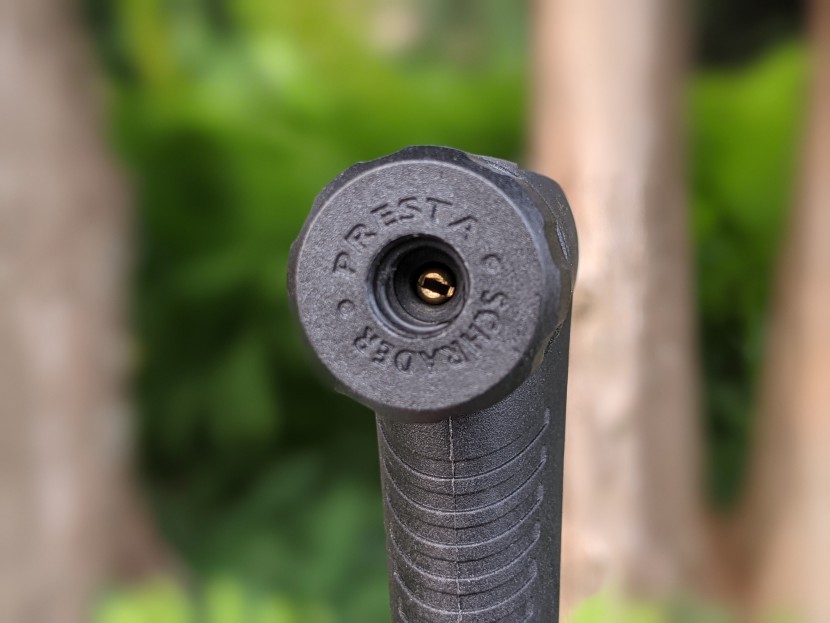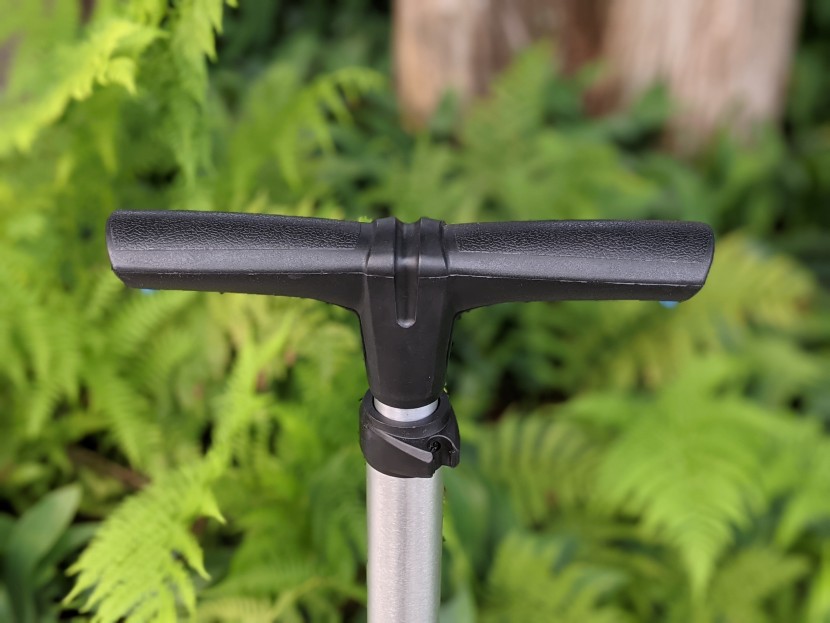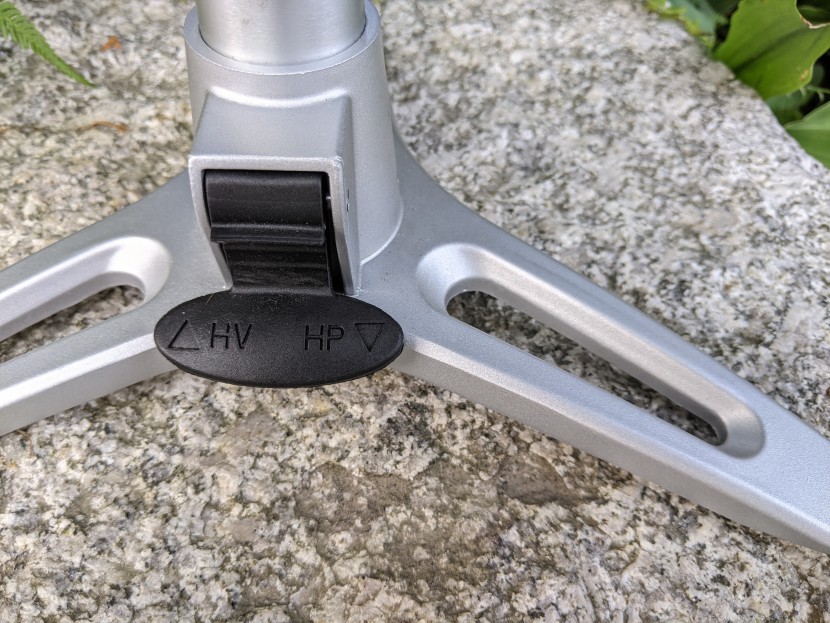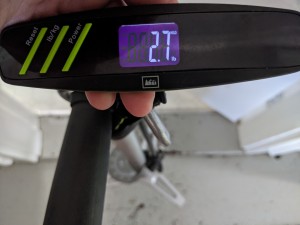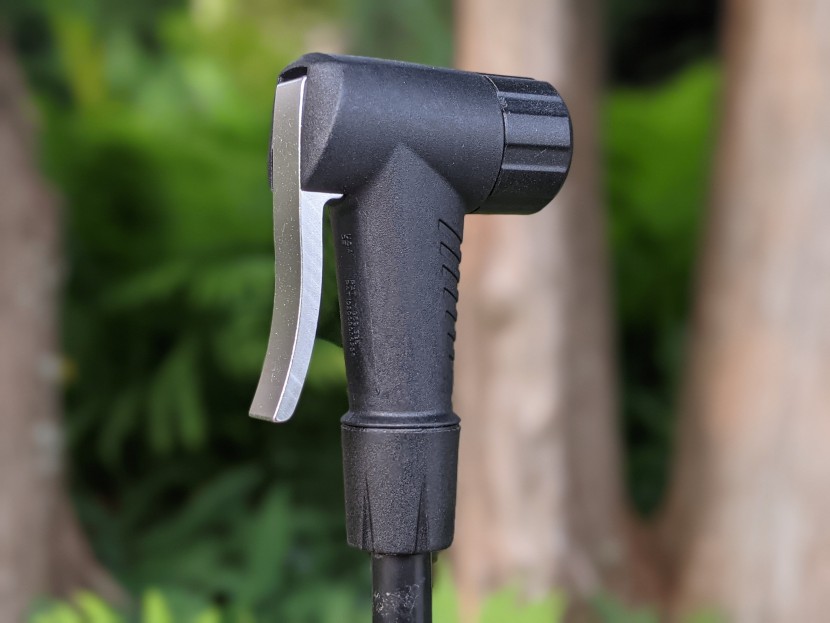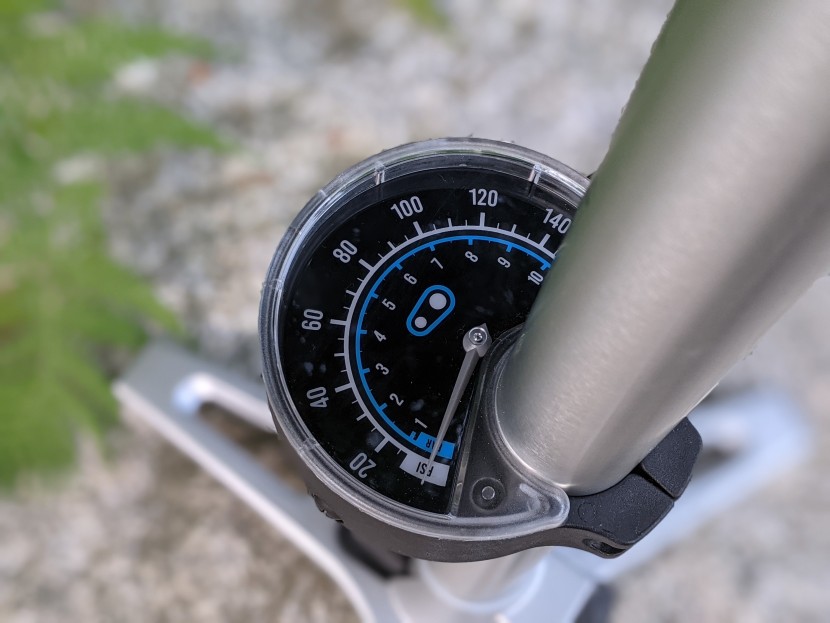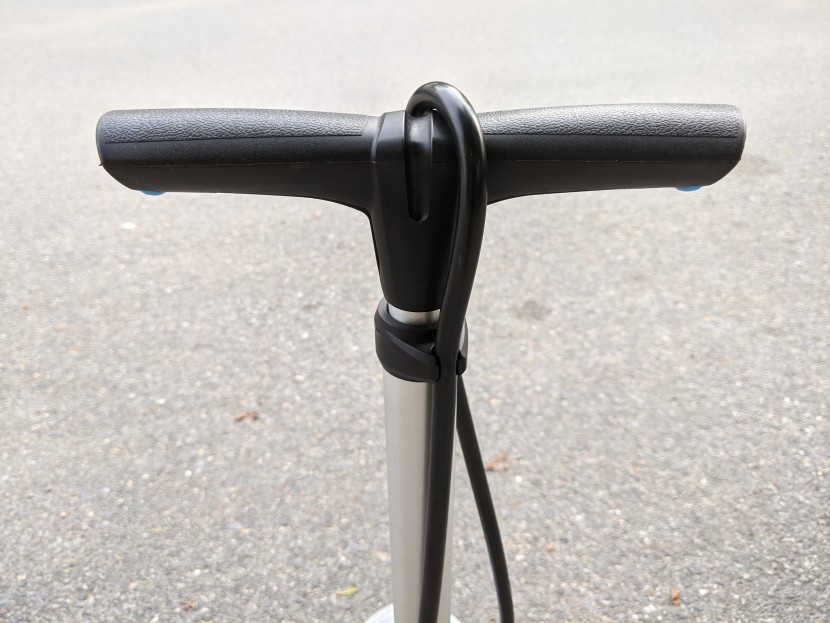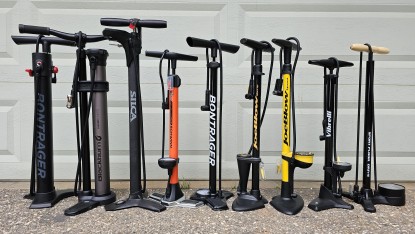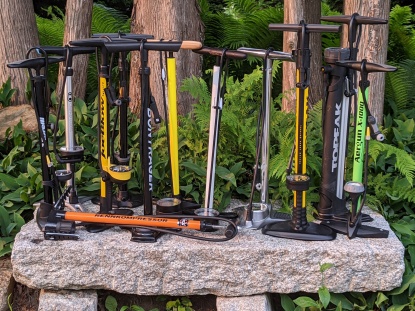Our Verdict
Our Analysis and Test Results
The Crankbrothers Sterling is a well-made and well-designed bike pump that sells for a very reasonable price point. It's incredibly stable, has a universal nozzle, and works like a dream with high-volume tires. Some things about the gauge could be improved, as well as aspects of performance with high-pressure tires, but nothing so big as to keep us from heartily recommending this pump.
Ease of Attachment
The universal nozzle on the Sterling works well. Just press it down on the tire's valve until it connects and flip the lever up to lock it in place. The chuck is compatible with both Schrader and Presta valves; no adapters or adjustments required. This is an incredibly useful feature if you use both valve types often and is a favorite of our friends who own bike shops or rental businesses.
The hose is one of the shorter options in our review. It's mounted on the right side of the gauge, is angled outward, and swivels a full 360 degrees. It's pliable but already holds a curve from its storage position over the handle. It's not the nicest option in the test, but it works fine.
The pump's handle hides a needle for soccer or basketballs and a plastic valve adapter for things like pool tools. It hides them well. One of the two blue plastic end caps displays raised symbols of the adapters. Pull it out using the lip at the bottom to access them. It's a nice touch, but without clear instructions, it can be hard to find, let alone appreciate.
Inflation
The pump has two settings, one for high pressure and another for high volume. A pedal at the base of the pump controls the two. We didn't find it that easy to manipulate with the feet, though, so we usually leaned over and used our hands instead.
The pump action is smooth, and the 9-inch handle is wide enough, ergonomic, and comfortable to hold. Some rough ridges on the underside of the grip bothered one of our testers, but the rest didn't mind it.
In our inflation tests, pumping a mountain bike tire from 10 to 30 PSI and a road tire from 40 to 80 PSI, the Sterling did well. It did especially well in the high volume (mountain bike) test, reaching 30 PSI in just 16 strokes. Only the Topeak JoeBlow Sport 2Stage, which has similar high pressure/high volume technology, is faster. It took 14 pumps to fill a road bike tire, though, the most of any other option in our lineup.
Stability
This is one of the most stable pumps in the test. It's compact, holds its weight low to the ground, and has a broad, tripod base that holds its own. It withstands knocks and nudges better than any other pump in our review.
The chuck is another matter. There is just one hose clamp at the top of the shaft (most options have two). It secures the hose over the top of the handle on the opposite side of the gauge. That makes it easy to grab the pump and go, but the chuck is left to knock around down by the gauge, which isn't great for the longevity of the chuck or the gauge if you travel with your pump often.
Accuracy
The Sterling isn't the most accurate pump in the test, but it was only off by a few PSI at a time. In the MTB test, it read 30 PSI. Our control gauge read 31. For the road tire, it nailed the 80 PSI pressure readings but tended to overshoot lower pressure readings (40 PSI) by a bit. That said, none of this pump's accuracy misses were large enough to give us cause for much concern.
The universal chuck doesn't release much air when you attach to or detach from a tire, which keeps the air in the tire where you put it. It also helps that the gauge is reasonably easy to read. As we'll discuss below, though, the gauge isn't very precise, and that can impact your accuracy to some extent.
Gauge
The gauge is elevated about 9.5 inches above the ground, bringing it closer to your line of sight. It's also about 3.5 inches across, with reasonably large PSI numbers. (The Bar numbers are much smaller and quite hard to see.)
Still, the gauge isn't super precise. It only marks pressure reading at intervals of 5 PSI. So if you want to get your pressure somewhere between 30 and 35, you're guessing. Some gauges in the test mark their gauges in increments of 2 PSI, which is much more helpful.
The numbers on this gauge aren't that big either, and they are set under glass. If the lighting is wrong, it can easily glare and block your line of sight. The gauge is our least favorite aspect of this pump.
Should You Buy the Crakbrothers Sterling?
Despite a less-than-perfect gauge and a few extra strokes to get our road tires up to pressure, the Crankbrothers Sterling really stole the show. It's perfect for anyone who regularly rips singletrack but also finds themselves on the road from time to time. Though not exactly cheap, this pump gives you a lot of performance for your money. Overall, we think it offers a very good value. Offering excellent high-volume inflation performance, reasonably high-pressure inflation speeds, and a universal gauge, it gives you the highest tech available in an incredibly well-balanced package.
What Other Bike Pumps Should You Consider?
The Sterling is a great little pump, but if you frequently need to seat the bead of tubeless tires, then you'll want to consider a model like the Bontrager TLR Flash Charger. Essentially a manual compressor, this pump blasts enough air to seat your tubeless tires while also performing admirably as a regular floor pump.



